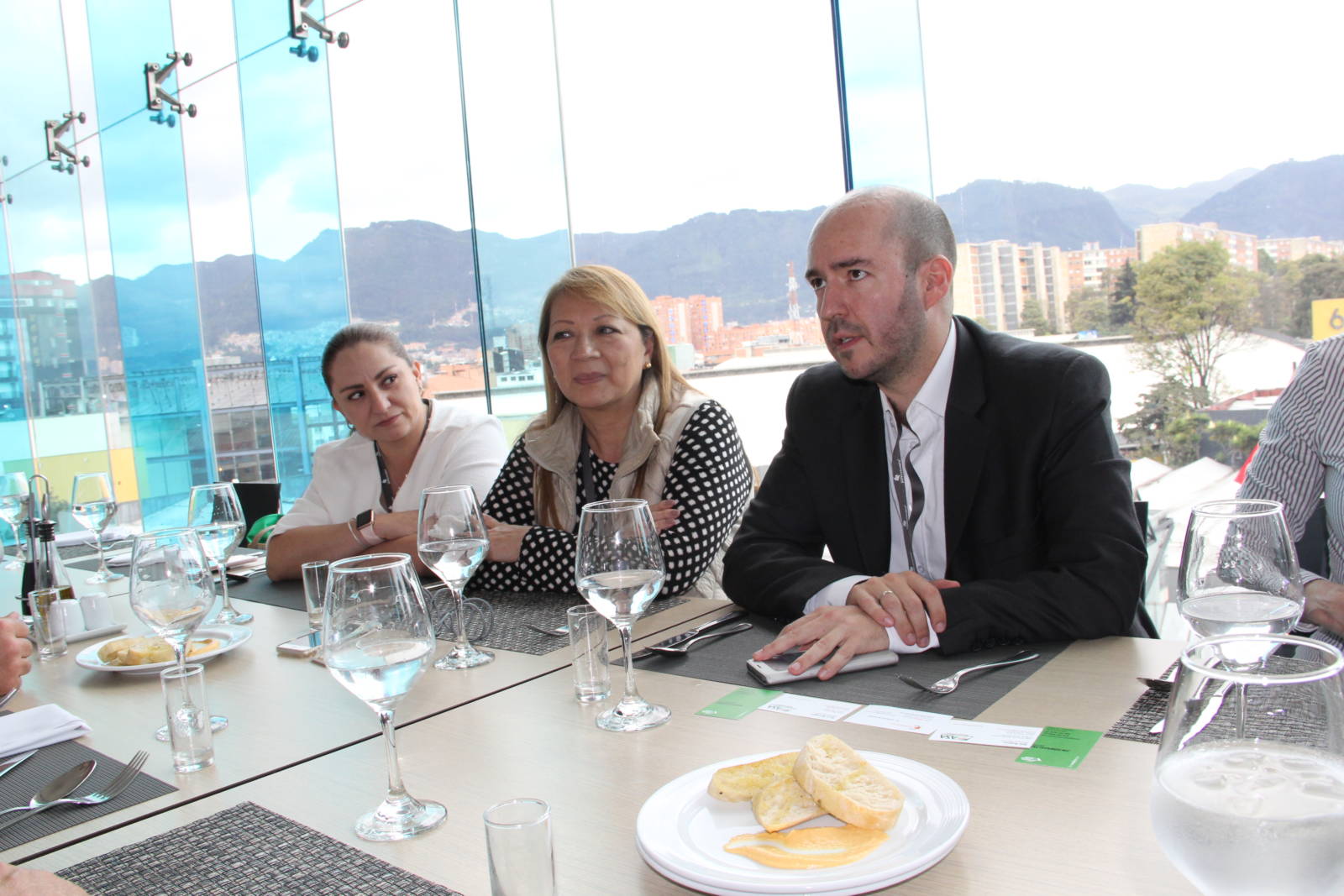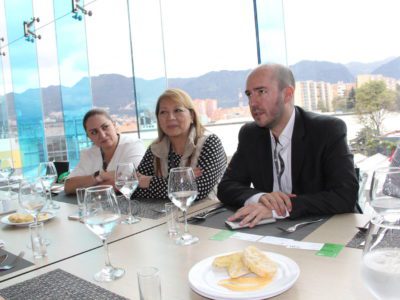Rising Meat Consumption In Colombia Means More Feed Needed, But What About Quality?
Understanding customer needs was a key part of a group of U.S. farmers’ mission to Colombia and Bill Raben, American Soybean Association (ASA) Director from Ridgeville, Illinois, was getting right to it. After introductions and friendly greetings, he smiled across the lunch table at the livestock producers and waded in.
“Could you tell me about what you’re feeding your livestock now?” Raben inquired. “See, I grow lots of soybeans and I would like to grow the kind of soybeans that you want to buy.”
That question, and the positive, friendly exchange that followed – slowly conducted through a translator – is at the heart of the work of U.S. soybean grower leaders and U.S. Soybean Export Council (USSEC) in marketing missions all around the world. This one, to Bogota, Colombia, involved not only customer interaction, but also a scan of technology exhibitors at the AgroExpo to discern if there might be new technology suited to quickly, reliably, and inexpensively measuring the component parts of soybeans and meal in the field or at the elevator. Mark Caspers, a United Soybean Board (USB) director from Auburn, Nebraska and Jim Domagalski, USB director from Columbus, Michigan joined Raben on the mision to Colombia.
- AgroExpo Arch: Bill Raben, Jim Domagalski, Mark Caspers and Nayeli Vilanova pose before going through the arch to enter AgroExpo in Bogota, Colombia. The annual event has more than 570 exhibitors and draws more than 160,000 international visitors
- Chalkboard Talk: Mark Caspers, USB director, Nebraska, adds his note on a blackboard inviting comments at PorkColumbia’s exhibit at AgroExpo. His message: “Keep feeding high quality U.S. soybean meal!”
- Gateway to Gateway: U.S. soybean growers gain insight on customer needs from Colombia pork and chicken producers over lunch at the AgroExpo in Bogota. Maria del Carmen Otero, current president of Colombian pork producers, (second from right on the far side of the table) operates a pork and poultry operation in the Cali region of Colombia. A mural of the St. Louis Arch is at the right.
- Pork Power: Executive President Carlos Maya (right) of PorkColombia offers an overview of increasing pork production in Colombia over lunch at the AgroExpo. Consumption of pork in Colombia has risen steadily in recent years.
- Serious Learning: Andres Valencia, president of FENAVI, the Colombian Poultry Farmers Federation (back to camera) shares insight on increased meat consumption and soybean use in Colombia with soybean growers, USSEC staff, and officials from the U.S. Embassy in Bogota.
- Tech Dialogue: Mark Caspers (left), Jim Domagalski (right), and Bill Raben, (back to camera), learn more about technology offered by InSak, a supplier of measuring instruments exhibited at the AgroExpo Conference in Colombia
A Growing Economy
The Colombia market is fertile ground for U.S. soybeans. Growth in gross domestic product (GDP) has steadily risen at the average of 4.7 percent per year, according to the World Factbook, published by the U.S. Central Intelligence Agency (CIA). Agriculture accounts for about seven percent of Colombia’s GDP. Recent growth in GDP has been hampered by falling energy prices and a stronger U.S. dollar.
Pork On The Rise
Inside the PorkColombia spectacle sponsored by Colombian pork producers at AgroExpo, young tour guides take small groups through different displays of a half-acre indoor exhibit complete with a meat market, cooking demonstrations, and live sows in farrowing pens, baby pigs and all.
Spend a few minutes with Carlos Maya, executive president of PorkColumbia and he’ll soon be encouraging you to have a pork sandwich or a side of ribs. Pork consumption is on the rise in Colombia and he’s eager to see it go higher.
“Pork production has doubled in the past five years,” explains Mr. Maya. “And we expect to see it double again in the next seven or eight years.”
And as Bill Raben learned at lunch, this is good news for U.S. soybean growers, because many livestock growers in Colombia find it easier to buy and transport U.S. beans than soy from other origins. Quality and transportation are significant issues to them.
During Raben’s lunch conversation with Maria del Carmen Otero, president of the Columbian pork producers and owner of a pork and poultry operation called Granjas Paraiso, near Cali, Colombia, he learned that they seek to feed a soybean meal that’s 46 percent protein. The operation produces more than 5,000 hogs per year.
These personal conversations and relationship building are critical for U.S. farmers to gauge what their customers are looking for.
“You know, most of us farmers here in the U.S. generally sell bushels. We’re always pushing the seed companies for higher yields,” says Raben. “But many of our customers are very interested in getting a better quality of soybeans. And they are willing to pay for quality.”
Poultry In Motion
Inside the offices of FENAVI, the Colombian Poultry Producers Federation, Andre Valencia, president of the group, shares that poultry producers in Columbia produced about 1.5 million tons of meat and some 13 billion eggs in 2016. With a per capita meat consumption of about 100 kilograms per person per year, Valencia says there’s “still room to grow.”
That’s more good news for soybean growers. Colombia lacks any significant production of soybeans and currently imports about 300,000 tons of beans and 1.5 million tons of soybean meal per year to feed these birds.
USSEC has put on producer workshops for Columbian poultry producers focused on further efficiency to be gained with higher quality rations.
Key variables for Colombian producers are freight costs and the U.S. dollar / Colombian peso exchange rate. Concern for the exchange rate is especially fresh in the minds of many Colombian producers of poultry since 2015, explains Valencia, because that year they saw their cost of production rise about 40 percent, mainly due to a change in the exchange rate.
Quality is Key
While U.S. soybeans currently seem to be the top choice in Colombia, there’s still much work to be done to make sure that continues – not only in Colombia, but also in other world markets.
“More farmers need to be thinking about quality issues when they are choosing traits,” Domagalski says. “Somehow we’ve got to pound this into the farmers coming on – ‘hey guys, this is where it needs to be today’ – and create a new goal out there for protein content.”
Domagalski says he appreciates the amazing things seed companies have done and adds, “So now, why not higher protein?”
“This is dog-eat-dog out there in the world market and we need things that can differentiate our beans.”






